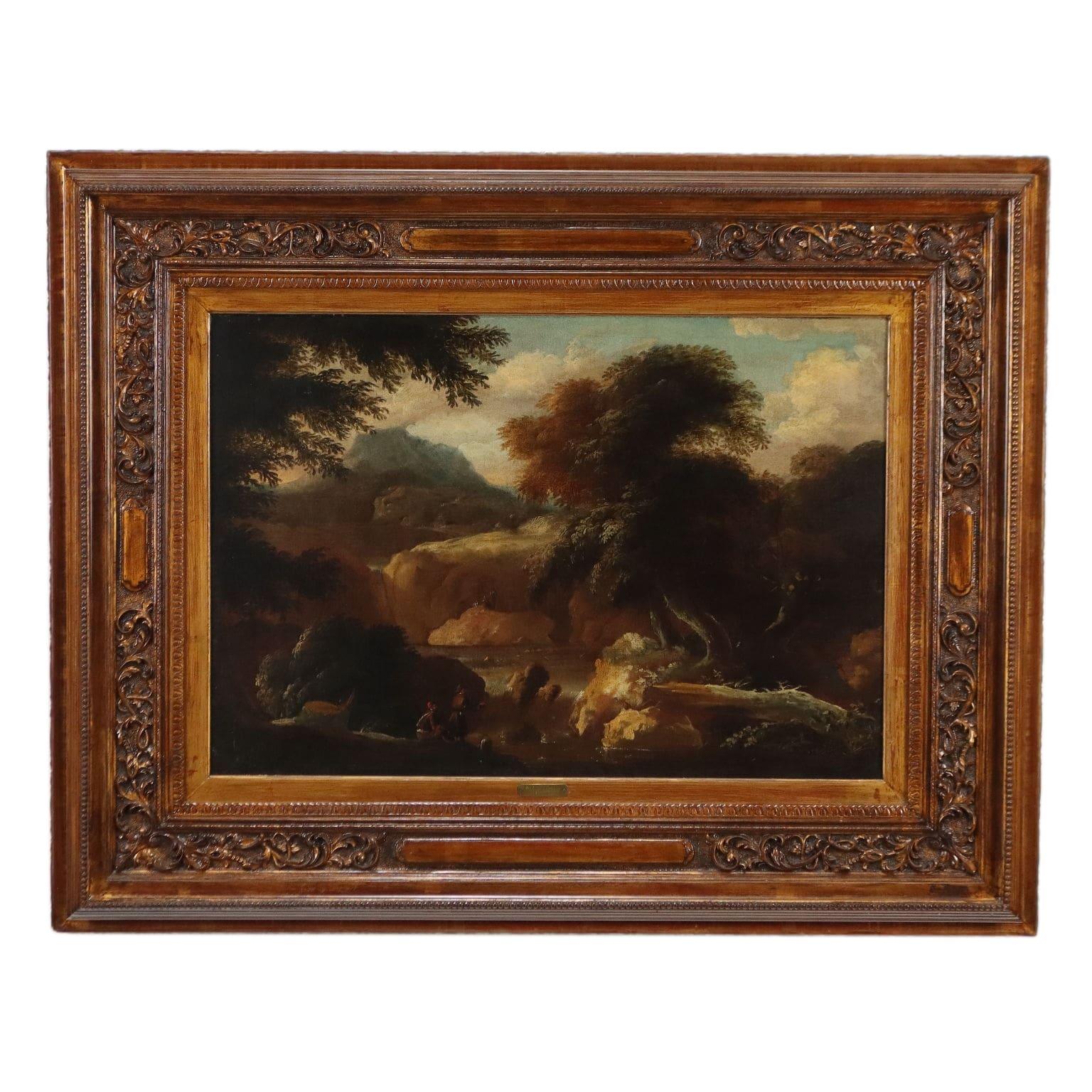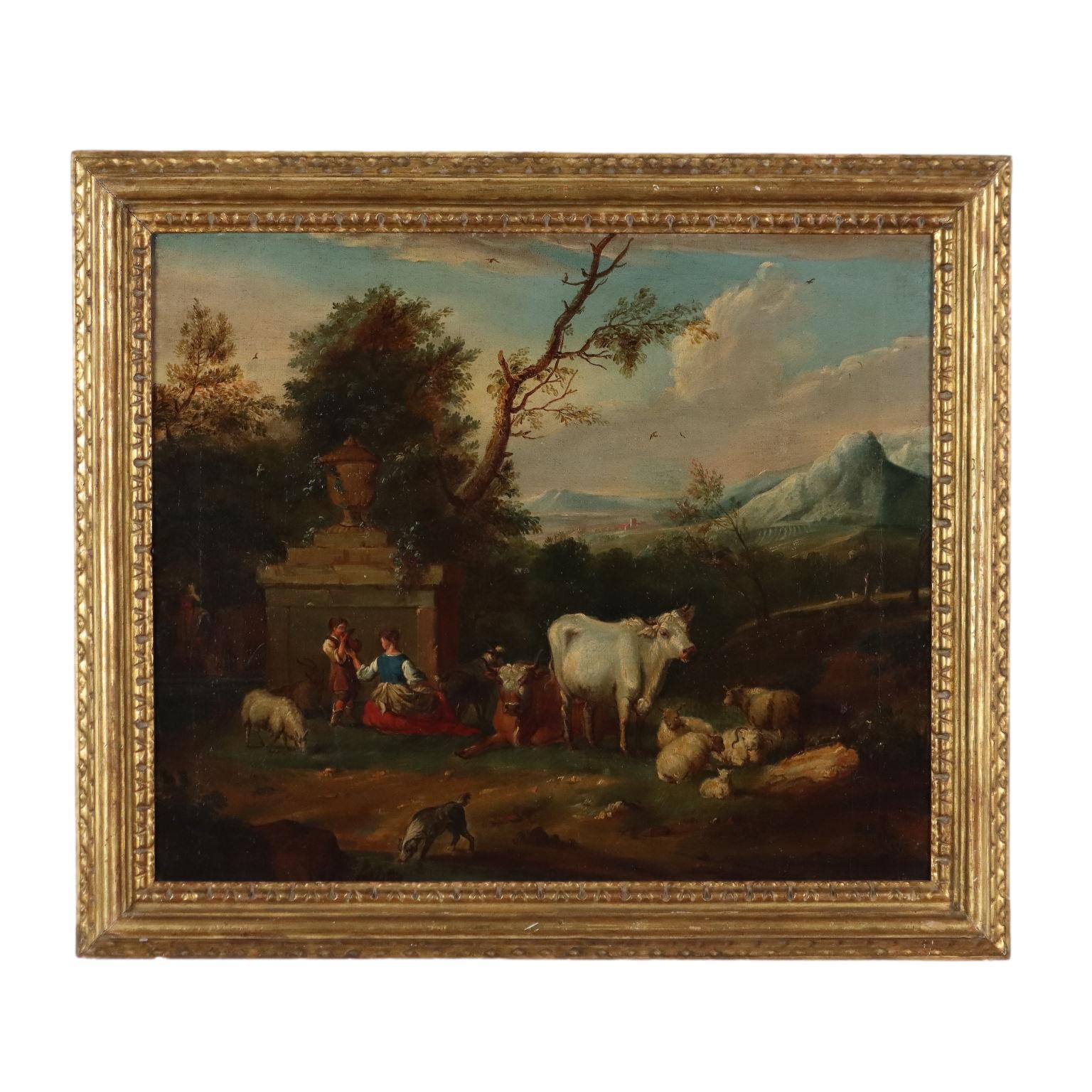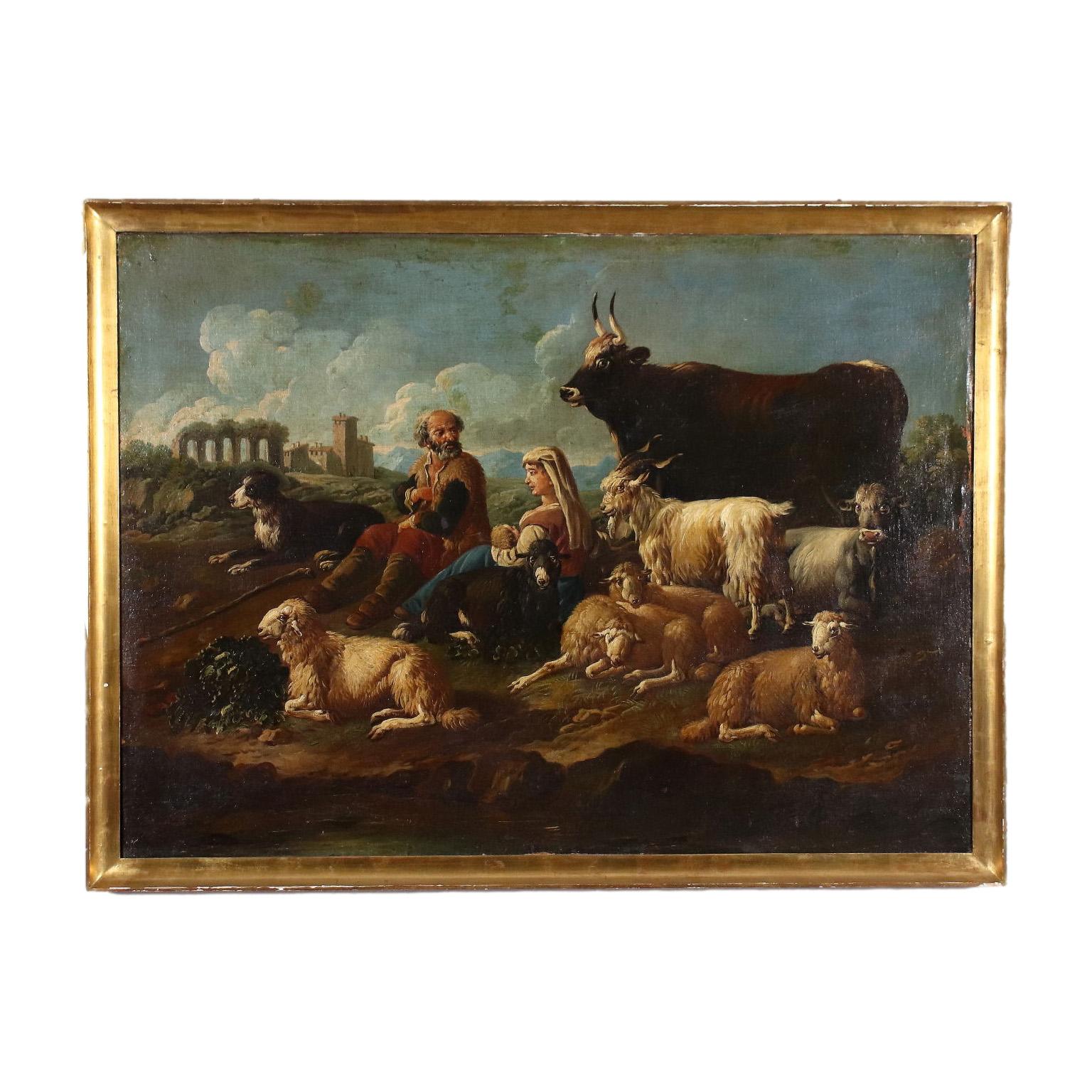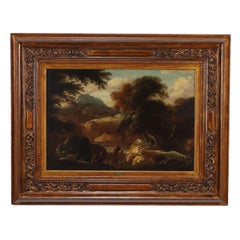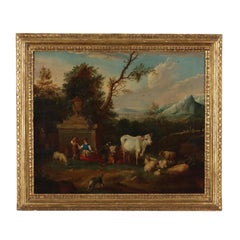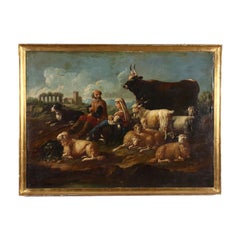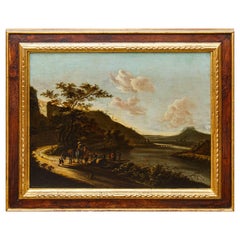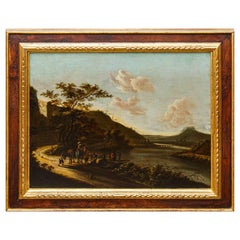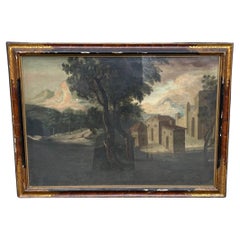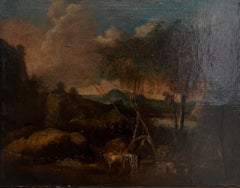Items Similar to Painted Landscape with Shepherdess and Sheep late 1700s
Want more images or videos?
Request additional images or videos from the seller
1 of 15
UnknownPainted Landscape with Shepherdess and Sheep late 1700s1700s
1700s
$2,560.70
$3,200.8720% Off
£1,917.88
£2,397.3520% Off
€2,160
€2,70020% Off
CA$3,594.35
CA$4,492.9420% Off
A$3,931.81
A$4,914.7720% Off
CHF 2,048.53
CHF 2,560.6620% Off
MX$47,308.54
MX$59,135.6720% Off
NOK 25,941.85
NOK 32,427.3220% Off
SEK 24,356.92
SEK 30,446.1420% Off
DKK 16,452.50
DKK 20,565.6320% Off
About the Item
Oil on Canvas. Central European school of the late 1700s.
The large painting depicts a rural landscape, with a peasant dwelling on the left, the shepherdess in the left foreground watching her flock of sheep watering in the nearby stream.
The atmosphere of muted colors and soft lighting, with pinkish clouds in the sky, hints at a quiet and peaceful twilight.
On first canvas, the painting is presented in coeval frame with gilding.
- Creation Year:1700s
- Dimensions:Height: 44.49 in (113 cm)Width: 64.97 in (165 cm)Depth: 1.97 in (5 cm)
- Medium:
- Period:
- Condition:
- Gallery Location:Milan, IT
- Reference Number:1stDibs: LU680315570632
About the Seller
4.8
Vetted Professional Seller
Every seller passes strict standards for authenticity and reliability
Established in 2017
1stDibs seller since 2017
126 sales on 1stDibs
Typical response time: 2 hours
- ShippingRetrieving quote...Shipping from: Milan, Italy
- Return Policy
Authenticity Guarantee
In the unlikely event there’s an issue with an item’s authenticity, contact us within 1 year for a full refund. DetailsMoney-Back Guarantee
If your item is not as described, is damaged in transit, or does not arrive, contact us within 7 days for a full refund. Details24-Hour Cancellation
You have a 24-hour grace period in which to reconsider your purchase, with no questions asked.Vetted Professional Sellers
Our world-class sellers must adhere to strict standards for service and quality, maintaining the integrity of our listings.Price-Match Guarantee
If you find that a seller listed the same item for a lower price elsewhere, we’ll match it.Trusted Global Delivery
Our best-in-class carrier network provides specialized shipping options worldwide, including custom delivery.More From This Seller
View AllPainted Landscape with Shepherd and Sheep 18th century
Located in Milan, IT
Oil on Canvas. Central European school of the 18th century.
In the center of the scene, set in a richly vegetated landscape, stands a shepherd with his flock of sheep, caught in a mo...
Category
18th Century and Earlier Other Art Style Landscape Paintings
Materials
Oil
$3,205 Sale Price
20% Off
Dipinto Paesaggio con Figure fine 700 inizio 800
Located in Milan, IT
Olio su tela. Scuola italiana di fine '700 -inizio '800.
Il paesaggio di gusto romantico vede un fiume scorrere tra rive rocciose sormontate da alberi frondosi; sulla riva, in primo ...
Category
18th Century Other Art Style Landscape Paintings
Materials
Oil
Painted Landscape with Figures and Herds 18th century
Located in Milan, IT
Oil on Canvas. French school of the 2nd half of the 18th century.
Bucolic is this verdant countryside landscape, opening up in the background into bluish fields and mountains.
In the...
Category
18th Century and Earlier Other Art Style Landscape Paintings
Materials
Oil
$2,655 Sale Price
20% Off
Painted Landscape with Shepherds and Herds 17th century
Located in Milan, IT
Oil on Canvas.
The large scene, set in a hilly countryside, with a village and ruins in the background on the left, is completely occupied by the compact group of the many living fi...
Category
17th Century Other Art Style Landscape Paintings
Materials
Oil
$3,983 Sale Price
20% Off
Painted Landscape with Figures and Herd 18th century
Located in Milan, IT
Oil on Canvas. Central European school of the 18th century.
The vast northern landscape, rich in vegetation, is traversed by a small stream, along which, in the foreground, a herd o...
Category
18th Century Other Art Style Landscape Paintings
Materials
Oil
Painting River Landscape with Figures 18th century
By Antonio Francesco Peruzzini 1
Located in Milan, IT
Oil on Canvas.
The landscape of a richly vegetated countryside, against the backdrop of which is a mountain range of sharp peaks, is enlivened by the presence of three washerwomen, w...
Category
18th Century Other Art Style Landscape Paintings
Materials
Oil
$5,927 Sale Price
20% Off
You May Also Like
17th century, Landscape with characters
Located in Milan, IT
XVII Century
Landscape with characters
Oil on canvas, 72 x 92 cm
Framed, 95 x 112 cm
Category
Antique Late 17th Century Dutch Other Paintings
Materials
Canvas
17th century, Landscape with characters
Located in Milan, IT
XVII Century
Landscape with characters
Oil on canvas, 72 x 92 cm
Framed, 95 x 112 cm
Category
Antique 18th Century and Earlier Dutch Other Paintings
Materials
Canvas
antico paesaggio - scuola romana - olio su tela - fine 18 secolo - dipinto
Located in Milano, MI
antico paesaggio - scuola romana - olio su tela - fine 18 secolo - dipinto
antico paesaggio - scuola romana - olio su tela - fine 18 secolo - dipinto
...
Category
Antique 1890s Italian Paintings
Materials
Canvas
Pastoral scene
Located in Genève, GE
Work on canvas
Category
Mid-18th Century Italian School Landscape Paintings
Materials
Oil
$2,371
20th Century Oil on Canvas Italian Bucolic Landscape Painting, 1950
Located in Vicoforte, Piedmont
Italian painting from the mid-20th century. Work oil on canvas (applied on board, see photo) depicting bucolic landscape with characters and city in the background of good pictorial ...
Category
Mid-20th Century Italian Paintings
Materials
Canvas
Landscape and animated pastoral scene
Located in Genève, GE
Work on canvas
Frame in wood and plaster painted gold
47.5 x 72 x 3.5 cm
This work of art is an idyllic depiction of the countryside, characterized by a pastoral scene where nature...
Category
Early 20th Century Italian School Landscape Paintings
Materials
Oil
More Ways To Browse
Bucks County Oil
California Ocean Art
Corn Oil
David Gallup
Lake Scene Painting
Large Ocean Painting
Laura Browning Oil Painting
Lifeguard Beach
Modern Barn Art
Mountain Stream Painting
Oil Painting Botanical Garden
Oil Paintings Capri
Original Desert Landscape
Pacific Northwest Landscapes
Paintings Missouri
Paintings Of Lavender
Roma Oil Paintings
Venice San Giorgio
